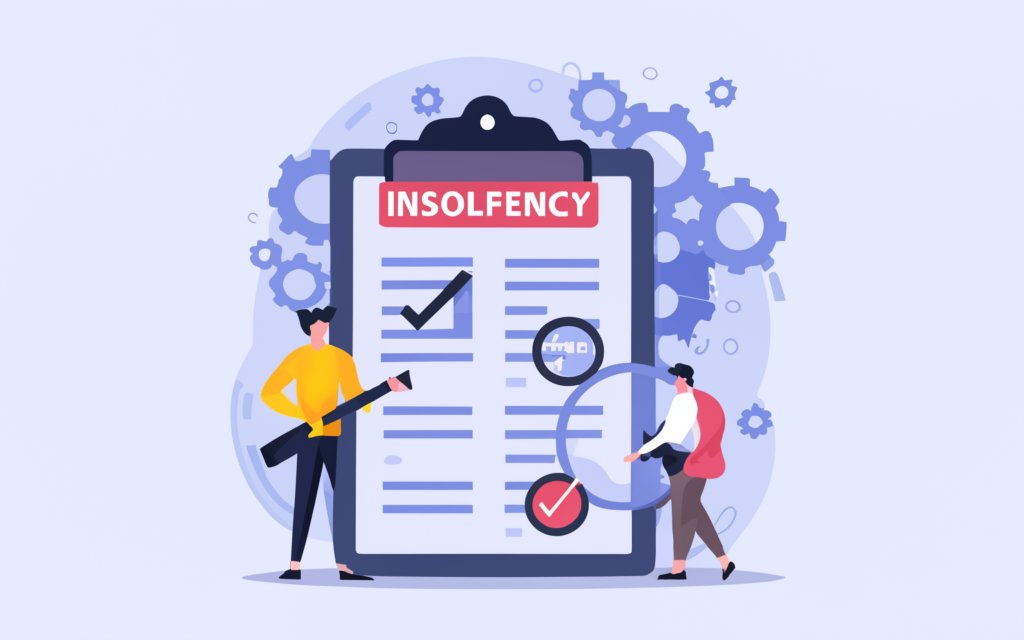|
Powered by AltAlpha AI
|
[“Abhijeet Patra is a 3rd Year B.A. LL.B. (Hons.) Student at Institute of Law, Nirma University, Ahmedabad”]
Introduction
The Insolvency and Bankruptcy Code, 2016 (“IBC”), introduced to simplify insolvency resolution and reorganise debtor-creditor relations, has significantly transformed India’s financial legal landscape. At the same time, the Arbitration and Conciliation Act, 1996, gives effect to alternative dispute resolution. The conflict between insolvency and arbitration occurs where parties to an arbitration agreement are also parties in insolvency proceedings, raising the issue of which process ought to dominate. Whereas arbitration focuses on party autonomy and consensual resolution of disputes, insolvency proceedings are collective and court-oriented, seeking fairness in the distribution of assets among creditors. This crossroads gives rise to complex questions regarding jurisdictional conflict, procedural hierarchy, and how far arbitral claims and awards may be pursued or enforced upon once insolvency has begun. This article critically evaluates these challenges, especially against the backdrop of the Supreme Court’s seminal ruling in Vidarbha Industries Power Ltd. v. Axis Bank Ltd. (hereinafter referred to as the Vidarbha Judgement), which redefined the Adjudicating Authority’s discretion to admit a financial creditor’s CIRP application under Section 7, IBC. It considers the implications of the judgment for arbitration proceedings, with emphasis on the enforcement and behaviour of arbitral awards in the face of looming insolvency.
Statutory Framework
IBC prescribes a clear-cut and strict mechanism for the acceptance of insolvency petitions. Section 7 allows financial creditors to start the Corporate Insolvency Resolution Process (CIRP) on the basis of default establishment. Likewise, Section 9 authorises operational creditors to initiate CIRP. Section 14 suspends legal proceedings, including arbitration, on the acceptance of a petition, whereas Section 238 gives overriding effect to the Code over contradictory laws. These are provisions intended to provide for the priority of collective insolvency resolution over individual recovery.
On the other hand, the Arbitration and Conciliation Act, 1996, is party-autonomous and non-interventionist in nature. Section 5 requires minimum judicial intervention, and Section 8 requires courts to refer the dispute to arbitration if there is a valid agreement. Section 34 and Section 36 provide for the setting aside and enforcement of arbitral awards. This scheme of things envisages arbitration as an autonomous and consensual process for resolving disputes. The conflict occurs when these two systems cross paths—particularly where unresolved or ongoing arbitral disputes are affected by or affect insolvency proceedings.
The Pre-Vidarbha Position
Prior to the Vidarbha judgement, judicial interpretation was mostly favourable to a rigid, mechanical implementation of the IBC as soon as a default occurred. In Innoventive Industries Ltd. v. ICICI Bank, it was held by the Supreme Court that after the Adjudicating Authority is convinced that there is a debt and there has been a default, it has to accept the application under Section 7. The Court emphasized that IBC is a standalone complete code and is not affected by any outside proceedings, including arbitration.
In addition, in K. Kishan v. Vijay Nirman Company Pvt. Ltd., the Court established that the pendency of arbitral proceedings is not, per se, a reason to deny a Section 9 application by an operational creditor. The ruling emphasized that as long as default is established, the fact that there is a dispute—though arbitrable—does not exclude the grant of an insolvency application. These decisions placed the IBC in the role of a supervening law that can override arbitration proceedings, especially at the admission stage.
The Vidarbha Judgment: A Shift in Interpretation
The Vidarbha judgment brought a significant change in approach from the previous judicial position. The case was one in which a financial creditor had made an application under Section 7 of the IBC in light of the pending arbitration proceedings and a challenge to an arbitral award pending. The NCLT had admitted the application, which was set aside by the Supreme Court.
Significantly, the Court construed the term “may” under Section 7(5)(a) to signify that the Adjudicating Authority possesses a discretion either to accept or refuse the application even if default is made out. The Court noted that the NCLT needs to exercise its judicial mind in the larger context, such as the pendency of an arbitral challenge, and not act like a rubber stamp. It ruled that, “The Adjudicating Authority is not obligated to accept an application under Section 7 even if a debt and default is proved.”
This reading introduces an element of discretion into what was otherwise perceived as a required framework. The Court also noted that insolvency law must not be used as an instrument for enforcing debt, especially where the solvency of the corporate debtor is not threatened by an outstanding dispute.
Impact On Arbitration Proceedings
A. Pre-Existing Arbitral Disputes
One of the significant implications of Vidarbha is its potential to preserve arbitration as a legitimate method of resolving disputes. In case of prudent use of discretion by the NCLT, it might decline to admit insolvency petitions where an arbitral dispute is pending. This ensures the sanctity of arbitration proceedings and prevents creditors from making coercive use of IBC. But this also opens the question of whether such discretion negates the certainty and speedy resolution mechanism that the IBC was intended to make available.
B. Post Admission: Effect Of Moratorium
After insolvency is admitted, Section 14 of the IBC kicks in, which places a moratorium on all proceedings, including arbitration. In Alchemist Asset Reconstruction v. Hotel Gaudavan, the Supreme Court categorically held that the moratorium covers arbitral proceedings as well. Thus, any ongoing arbitration would have to be suspended on the initiation of CIRP. But such a moratorium does not cancel the arbitration; it only stays it until the process of resolution is underway. This poses procedural hurdles to claimants and arbitrators equally, who may have their proceedings suddenly suspended for indefinite amounts of time.
Doctrinal & Policy Analysis
The Vidarbha ruling has been hotly controversial. Sceptics contend that providing discretion under Section 7 dilutes the IBC’s certainty and can potentially facilitate debtors from abusing arbitral objections to procrastinate, subverting its time-bound, creditor-led system. Others view it as a necessary protection against unfair insolvency triggers in real disputes. In my opinion, judicial discretion under Section 7, though an improvement towards balancing fairness, needs to be exercised carefully and supported by clear-cut judicial rationale. Uninhibited discretion lacking thresholds may lead to destabilizing the predictability of the IBC and unleash strategic litigation. A middle road, tribunals to review the gravity of the arbitral dispute prior to deferring insolvency, could find a balance between IBC’s commercial expediency and procedural integrity of arbitration. While jurisdictions such as the UK and Singapore put priority on insolvency in the public interest, they do so while also considering fairness. For example, in England, courts have allowed arbitration to continue if it does not interfere with the work of the administrator or the common interest of creditors, striking a balance between contractual rights and insolvency goals. Likewise, Singapore takes a pragmatic stance where the courts, under the Insolvency, Restructuring and Dissolution Act 2018, can lift the statutory moratorium against proceedings, including arbitration, if it is in the interest of commercial justice and does not prejudice the restructuring process
These schemes recognize an acceptance that while insolvency proceedings have to take precedence so as to maximize value and prevent creditor anarchy, fairness demands that real disputes should be determined on their merits and not smothered solely because of insolvency.
India is now confronted with the challenge of harmonizing these conflicting objectives.
Unresolved Questions & Challenges
Notwithstanding the Vidarbha judgment, various interpretational uncertainties remain unsettled. To begin with, the verdict does not prescribe concrete guidelines for how the NCLT must exercise discretion in Section 7(5)(a), leaving room for subjective or variable applications. Such a lack of consistency may deflect the IBC’s predictability and effectiveness. Secondly, it is not certain if the principles set out, addressing a financial creditor’s petition under Section 7, would extend to operational creditors moving under Section 9. As Section 9 prescribes a different threshold—specifically the presence of a dispute—courts have not yet finally settled if the same discretion could be exercised. Finally, there is increasing incoherence in the treatment of arbitral disputes in insolvency cases with divergent views on the applicability and effect of pending arbitration taken by various NCLTs. This piecemeal approach underscores the need for legislative guidance or binding judicial pronouncement to bring insolvency law consistency with arbitration to maintain both legal consistency and commercial certainty.
Conclusion
The Vidarbha judgment represents a fundamental departure from the previous strict application of the IBC, with the addition of discretion where mechanical application previously alone existed. In admitting outstanding arbitral disputes, it adjusts the equation between creditor rights and debtor protection. Yet, it also creates a window for uncertainty and delay that could vitiate the IBC’s gains in efficiency. Going forward, NCLTs must apply Vidarbha narrowly, ensuring it is limited to genuine disputes with procedural fairness. Meanwhile, legislative clarity is needed to address the arbitration-insolvency overlap, ensuring both operate in harmony without compromising commercial certainty.






